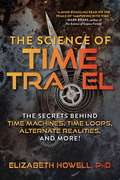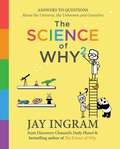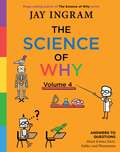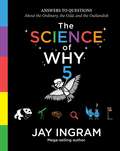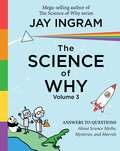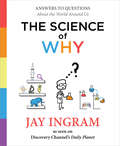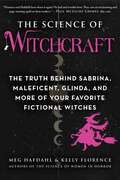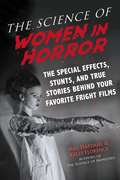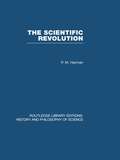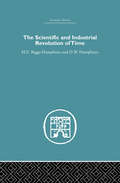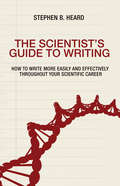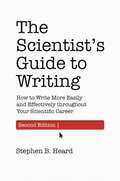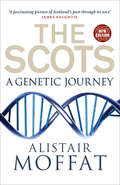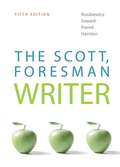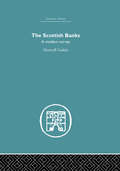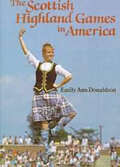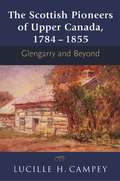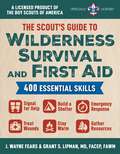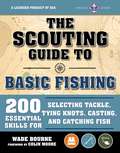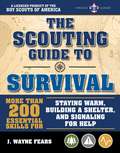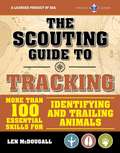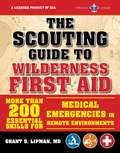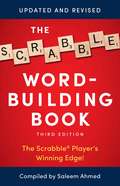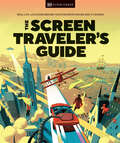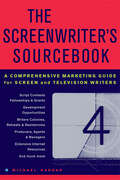- Table View
- List View
The Science of Time Travel: The Secrets Behind Time Machines, Time Loops, Alternate Realities, and More!
by Elizabeth HowellTravel back in time with Doctor Who, the Terminator, the X-Men, and all your favorite time travelers! Science fiction is the perfect window into the possibilities and perils of time travel. What would happen if you went back in time and killed your own grandparent? If you knew how to stop a presidential assassination, would time travel allow you to make your wish come true? Can we use time travel as a tool to escape the destiny of our future or mistakes of the past? The Science of Time Travel explores time travel through your favorite science-fiction franchises, from the classic time travel paradoxes of Star Trek to the universe-crossing shenanigans of Doctor Who. Discover the real science behind questions such as: Can time travel really erase our past regrets like in A Christmas Carol?Is it worth killing people in the past to prevent a horrible future like in Terminator?What can we learn from living the same day over and over again like in Groundhog Day?Could time travel destroy our right to privacy like in Deja Vu?And so much more! It's time to fire up the DeLorean to 88 mph, jump into the TARDIS hiding in plain sight, or warp space with the USS Enterprise to explore what time travel means for us.
The Science of Why 2: Answers to Questions About the Universe, the Unknown, and Ourselves
by Jay IngramAn all-new volume of science questions to delight, entertain, and inform readers of all ages, from bestselling author Jay Ingram.Bestselling author and commentator Jay Ingram is back to explain the magic and mysteries of the world around us. Jay takes readers on a tour of the universe, exploring wonders big and small. From the farthest reaches of space to the most perplexing historical riddles to the marvels of who we are and what we’re made of, Jay answers the important questions, such as: What’s inside a black hole? Will machines ever learn to feel? How much pee is in the average swimming pool? Because who hasn’t wondered whether we’re living in a computer simulation? Or whether Atlantis existed? Or why cats always land on their feet? With wit, wisdom, and whimsical illustrations, The Science of Why 2 will delight readers of all ages with the answers to all these questions and more. Full of fun science facts (and fictions), this is the book that everyone’s inner science geek needs to read.
The Science of Why, Volume 4: Answers to Questions About Science Facts, Fables, and Phenomena (The Science of Why series #4)
by Jay IngramBack by popular demand: a brand-new volume of science queries, quirks, and quandaries in the mega-bestselling Science of Why series, sure to enlighten and entertain readers of all ages.Have you ever wondered why we close our eyes when we sneeze? Or how far underground things can live? Or if there&’s a way to choose the fastest lineup at the grocery store? Yes? Then fasten your seat belts! Bestselling author Jay Ingram is here to take you on a rollercoaster ride through science&’s most perplexing puzzles. From the age-old mysteries that have fascinated us to the pressing unknowns about our future and all the everyday wonderings in-between, Jay answers questions that confound and dumbfound, such as: Why do zebras have stripes? How many universes might there be? Can we live for 200 years? ...along with everything you ever wanted to know about alien civilizations, photographic memories, nanobots, poop, and (conveniently) toilet paper. Bursting with laugh-out-loud illustrations, jaw-dropping marvels, and head-scratching science fictions, The Science of Why, Volume 4 will give readers of all stripes a real thrill.
The Science of Why, Volume 5: Answers to Questions About the Ordinary, the Odd, and the Outlandish (The Science of Why series #5)
by Jay IngramChock-full of peculiar puzzles, mind-bending mythbusters, and quirky questions, the fifth pop science book in the bestselling Science of Why series is perfect for anyone curious about the weird and wondrous world we live in.Have you ever wondered if octopuses are from outer space? What Mexican jumping beans are? Or if banana peels are really slippery? If questions like these are keeping you up at night, you can rest easy. Bestselling author Jay Ingram is here to answer all the whimsical and whacky wonderings that have baffled people since the dawn of time. From our bodies to our pets (and other beasts) to the natural world around us, Jay tackles science topics big and small, such as: Did dinosaurs sit on their eggs? What is our funny bone? Is there a specific muscle that makes dogs cute? Because who hasn&’t pondered whether plants have feelings? Or if Robin Hood was a real person? Or what humans will look like in the future? Teeming with amusing answers to bemusing questions—and handy and hilarious illustrations—this latest volume separates fact from fiction, lesson from legend, and myth from marvel. Endlessly illuminating and entertaining, The Science of Why, Volume 5 is five times the fun for new and old readers of the series.
The Science of Why: Answers to Questions About Science Myths, Mysteries, and Marvels
by Jay IngramThe newest volume in the beloved Science of Why series—full of fascinating science that will amuse and astonish readers of all ages.Have you wondered why you cringe when fingernails are scratched along a chalkboard? Or whether you could ever have a cybernetic limb? Or if a shark can smell a drop of blood a mile away? Then you’re in luck! Bestselling author Jay Ingram is back to answer all those questions and more as he explores and explains the world around us in all of its head-scratching curiosity. From the smallest parts inside us to the biggest questions about our universe, Jay tackles pressing topics, such as: Could we use a laser to shoot an asteroid that was about to hit earth? What exactly was a dodo and why did it go extinct? Why do beans make me fart? Touching on everything from food to robots to space to the animal kingdom, The Science of Why 3 is perfect for anyone who has stayed up late into the night pondering the weird and wonderful world we live in. Full of captivating science questions (and answers!), this book is sure to surprise and delight science readers of all ages.
The Science of Why: Answers to Questions About the World Around Us
by Jay IngramEver wonder why onions make you cry? Or why lizards do pushups? Or why leaves change color in the fall?Don't worry, you're not alone. Acclaimed science writer and broadcaster Jay Ingram wonders the same things. After a long career of asking important questions (Does time speed up as we age? How much Neanderthal is in me? Why do some animals throw their feces?), he's here to put our scientific quandaries to rest. In this insightful, witty book for curious readers of all ages, Jay shares his favorite head-scratchers and mind-benders, settling pressing questions, such as... -What is déjà vu? -Why were Tyrannosaurus Rex's arms so short? -Why are you plagued by mosquitoes while your friends aren't? -Does your cat actually like you?* -What is déjà vu? ...along with everything you ever wondered about human echolocation, Bigfoot and farts (though not all at once). Whimsically illustrated and chock-full of fun science facts (and fictions), this book will delight and surprise your inner science geek. *SPOILER: She actually thinks you're a larger, dumber version of her mother.
The Science of Witchcraft: The Truth Behind Sabrina, Maleficent, Glinda, and More of Your Favorite Fictional Witches (The Science of)
by Meg Hafdahl Kelly FlorenceA scientific discovery of witches in fiction—Chilled Adventures of Sabrina, Sleeping Beauty, Wicked and so many more! Kelly Florence and Meg Hafdahl, authors of The Science of Women in Horror and co-hosts of the Horror Rewind podcast called &“the best horror film podcast out there&” by Film Daddy, present a guide to the history of witchcraft through the stories and characters we all know and love. Reveal the spellbinding science behind the legends and lore surrounding fiction&’s most iconic witches, answering such questions as: What is the science behind divination and spellcraft?When did witchcraft begin to show up in literature and media?Has science made it possible to uncover the truth behind the powers of necromancy and employing familiars?How has witchcraft been thought of throughout the world? Through interviews, film and literary analysis, and bone-chilling discoveries, join Kelly and Meg as they learn about the complicated and rich science of witchcraft throughout the centuries and discover why now is the season of the witch!
The Science of Women in Horror: The Special Effects, Stunts, and True Stories Behind Your Favorite Fright Films
by Meg Hafdahl Kelly FlorenceFrom scream queens to femmes fatale, horror isn&’t just for the boys. Gothic media moguls Meg Hafdahl and Kelly Florence, authors of The Science of Monsters, and co-hosts of the Horror Rewind podcast called &“the best horror film podcast out there&” by Film Daddy, present a guide to the feminist horror movies, TV shows, and characters we all know and love. Through interviews, film analysis, and bone-chilling discoveries, The Science of Women in Horror uncovers the theories behind women&’s most iconic roles of the genre. Explore age-old tropes such as &“The Innocent&” like Lydia in Beetlejuice, &“The Gorgon&” like Pamela Voorhees in Friday the 13th, and &“The Mother&” like Norma Bates in Pyscho and Bates Motel, and delve deeper into female-forward film and TV including: The Haunting of Hill HouseTeethChilling Adventures of SabrinaBuffy the Vampire SlayerAnd so much more! Join Kelly and Meg in The Science of Women in Horror as they flip the script and prove that every girl is a &“final girl.&”
The Scientific Revolution (Routledge Library Editions: History & Philosophy of Science)
by Peter HarmanOriginally published in 1983.This volume outlines some of the important innovations in astronomy, natural philosophy and medicine which took place in the sixteenth and seventeenth centuries, and shows how the transformation in world-view during the period was affected by broader historical terms. Themes such as the spread of Puritanism, the decline of witchcraft and magic, and the incorporation of science as an integral part of the intellectual milieu of late seventeenth-century England.
The Scientific and Industrial Revolution of Time (Economic History Ser.)
by M.E. Beggs Humpreys D.W. HumphreysFirst Published in 2005. Routledge is an imprint of Taylor & Francis, an informa company.
The Scientist's Guide to Writing: How to Write More Easily and Effectively throughout Your Scientific Career
by Stephen B. HeardThe ability to write clearly is critical to any scientific career. The Scientist's Guide to Writing provides practical advice to help scientists become more effective writers so that their ideas have the greatest possible impact.Drawing on his own experience as a scientist, graduate adviser, and editor, Stephen Heard emphasizes that the goal of all scientific writing should be absolute clarity; that good writing takes deliberate practice; and that what many scientists need are not long lists of prescriptive rules but rather direct engagement with their behaviors and attitudes when they write. He combines advice on such topics as how to generate and maintain writing momentum with practical tips on structuring a scientific paper, revising a first draft, handling citations, responding to peer reviews, managing coauthorships, and more.In an accessible, informal tone, The Scientist's Guide to Writing explains essential techniques that students, postdoctoral researchers, and early-career scientists need to write more clearly, efficiently, and easily.Emphasizes writing as a process, not just a productEncourages habits that improve motivation and productivityExplains the structure of the scientific paper and the function of each partProvides detailed guidance on submission, review, revision, and publicationAddresses issues related to coauthorship, English as a second language, and more
The Scientist’s Guide to Writing, 2nd Edition: How to Write More Easily and Effectively throughout Your Scientific Career
by Stephen B. HeardAn updated and expanded edition of the acclaimed writing guide for scientistsThe Scientist’s Guide to Writing explains the essential techniques that students, postdocs, and early-career scientists need to write more clearly, efficiently, and easily. Now fully updated and expanded, this incisive primer offers practical advice on such topics as generating and maintaining writing momentum, structuring a scientific paper, revising a first draft, handling citations, responding to peer reviews, managing coauthorships, and more. The ability to write clearly is critical to any scientific career. The Scientist’s Guide to Writing shows scientists how to become better writers so that their ideas have the greatest possible impact.New chapters discuss effective reading, choosing the right journal for your research, and the advantages and disadvantages of posting preprintsProvides additional advice on reporting statistical results, dealing with conflicting peer reviews, managing coauthorships, writing with English as an additional language, and moreEmphasizes writing as a process, not just a productEncourages habits that improve motivation and productivityOffers detailed guidance on submission, review, revision, and publicationIncludes a wealth of new exercises
The Scots: A Genetic Journey
by Alistair MoffatThis unique &“fusion of science and the physical history&” traces the story of the Scots through their DNA (Sunday Herald). An almost limitless archive of our history lies hidden inside our bodies, and this book traces the ancient story of Scotland from that scientific viewpoint. The mushrooming of genetic studies, of DNA analysis, is rewriting history in spectacular fashion. In Scotland: A Genetic Journey, Alistair Moffat explores the history that is printed on our genes, and in a remarkable new approach, uncovers the detail of where Scots are from, where they have journeyed, and who they are—and in so doing, vividly colors in a DNA map of Scotland. &“[Moffat] is wonderfully able to communicate the epic elements of the story.&” —Scotsman
The Scott, Foresman Writer (5th Edition)
by John Ruszkiewicz Daniel E. Seward Christy Friend et alKnown for its innovative coverage of argument, in its fifth edition the SF Writer continues to offer writers the most innovative support in documentation, visual rhetoric and applying writing beyond the composition classroom. This is the brief handbook that reflects where the field is going, and provides students with the solutions they will use to strengthen their writing in college and beyond.
The Scottish Banks: A modern survey
by Maxwell GaskinBanking in Scotland has a long and distinguished history - to this day Scotland is served by its own banks which form a distinct regional group within the wider British banking system. Yet, until this volume, there had been no book which gives a full account of modern Scottish banking, analyzing its position within the British banking structure. With this comprehensive study, this gap in the literature of modern British financial institutions has now been filled. Here, all aspects of Scottish banking are covered. The author describes the structure of the system and the pattern of branch banking, examining the position and practices of Scottish banks in regard to deposits and asset holding. He sets out the modern position of Scottish bank note issues and analyzes their significance both for the banks themselves and for the British system as a whole. The book gives valuable appraisal of the performance of the Scottish banks as lenders to the private business sector. The author is not concerned with Scottish banks simply as institutions domestic to Scotland. He traces their relationship with the City of London and fully analyzes their role within the operations of wider British Monetary policy. This fascinating study, first published in 1965, concludes with a consideration of the future prospects of the Scottish banks within British banking as a whole.
The Scottish Highland Games in America
by Emily Ann Donaldson"This is a work of great value to all who seek knowledge of Scottish-American events, and who wish to understand what surely must be one of the most interesting, colorful, and evident ethnic occurrences in the U.S." -W. R. McLeod vice-chairman, Dunvegan Foundation Clan McLeod"The author's enthusiasm for the Scottish Highland Games, and indeed her expertise, are reflected in this long-awaited work. All who are interested in the story of this enduring and popular festival will be grateful to Ann Donaldson for her conscientious research. It is a fine tribute to those Americans of Scottish descent who have contributed to keep this unique aspect of their culture vibrantly alive in the New World." -Gerald Redmond author of The Sporting Scots of Nineteenth Century CanadaDiscover the Scottish Highland Games, celebrated in over thirty U.S. states every year. Participants compete in the caber toss, Highland dancing, piping and drumming, fiddling, and many more competitive and non-competitive events.The Scottish Highland Games in America recognizes the players and events that keep the modern Games alive and exciting. Readers will discover the history of the Games, rooted in Scotland and celebrated in the United States, Canada, Australia, New Zealand, and other countries where Scots have settled. A complete state-by-state listing of the Games and their events is also provided.ABOUT THE AUTHOR Emily Ann Donaldson is a devoted Games fan, a participant in Scottish country dancing, and a member of several Scottish associations.
The Scottish Pioneers of Upper Canada, 1784-1855: Glengarry and Beyond
by Lucille H. CampeyGlengarry, Upper Canada’s first major Scottish settlement, was established in 1784 by Highlanders from Inverness-shire. Worsening economic conditions in Scotland, coupled with a growing awareness of Upper Canada’s opportunities, led to a growing tide of emigration that eventually engulfed all of Scotland and gave the province its many Scottish settlements. Pride in their culture gave Scots a strong sense of identity and self-worth. These factors contributed to their success and left Upper Canada with firmly rooted Scottish traditions. Individual settlements have been well observed, but the overall picture has never been pieced together. Why did Upper Canada have such appeal to Scots? What was their impact on the province? Why did they choose their different settlement locations? Drawing on new and wide-ranging sources author Lucille H. Campey charts the progress of Scottish settlement throughout Upper Canada. This book contains much descriptive information, including all known passenger lists. It gives details of the 550 ships, which made over 900 crossings and carried almost 100,000 emigrant Scots. The book describes the enterprise and independence shown by the pioneers who were helped on their way by some remarkable characters such as Thomas Talbot, Lord Selkirk, John Galt, Archibald McNab and William Dickson. Providing a fascinating overview of the emigration process, it is essential reading for both historians and genealogists. Scots were some of the provinces earliest pioneers and they were always at the cutting edge of each new frontier. They were a founding people who had an enormous influence on the province’s early development. "I am happy to commend Lucille Campey’s latest book on Scottish settlement patterns in Canada. The product of meticulous research, The Scottish Pioneers of Upper Canada has much to offer both genealogists and general readers, as it weaves together statistical information, institutional histories and personal accounts to produce a fascinating picture of the multi-dimensional networks that underpinned the transatlantic movement and brought 100,000 Scots to Upper Canada during the seven decades reviewed. Persistent myths of helpless exile are challenged, as the preconditions and processes of emigration are analyzed, along with the cultural traditions imported by the ’trail blazers and border guards’ who laid the foundations of Canada’s most populous province." - Marjory Harper, Reader in History, University of Aberdeen "With a real feel for the sacrifice and the emotional turmoil of the pioneers, Lucille H. Campey has one again got her audience to face the raw heritage common to every Scots-Canadian. This is an excellent read, full of fascinating detail dug from much archival research. This book is another splendid addition to a series of much interest to both historians and genealogists." - Professor Graeme Morton, Scottish Studies Foundation Chair, University of Guelph
The Scout's Guide to Wilderness Survival and First Aid: 400 Essential Skills—Signal for Help, Build a Shelter, Emergency Response, Treat Wounds, Stay Warm, Gather Resources
by Grant S. Lipman J. Wayne Fears2 books in 1 at a value price! Be Prepared! Time-tested advice on emergency preparedness. An official publication of the Boy Scouts of America! Each year hundreds of outdoor enthusiasts find themselves in an unexpected outdoor emergency. They get lost, injured, or stranded. Cut off from the rest of the world, they have to depend upon their survival skills to survive. For most people, thanks to modern communications such as cell phones, satellite messengers, and personal locator beacons (PLB), it is merely a sobering two- or three-hour adventure. However, for some who did not take the proper precautions before they left home or do not have survival skills, it can end in tragedy.The Scout's Handbook for Wilderness Survival and First Aid offers practical advice to help with: Building a firePurifying waterIdentifying common edible plants and mushroomsSignaling for helpBuilding simple sheltersPractical navigation skillsTreating woundsResponding in a medical emergencyAnd so much more! Since 1910, the Boy Scouts of America has helped build the future leaders of this country by combining educational activities and lifelong values with fun. The BSA is committed to training youth in responsible citizenship, character development, and self-reliance through participation in a wide range of outdoor activities.
The Scouting Guide to Basic Fishing: 200 Essential Skills for Selecting Tackle, Tying Knots, Casting, and Catching Fish (A BSA Scouting Guide)
by Wade Bourne The Boy Scouts of AmericaIn The Scouting Guide to Basic Fishing, current Scouts, Scout alumni, and anyone interested in the outdoors are provided with a step-by-step guide that masterfully breaks down the art of fishing with diagrams, vivid photographs, and lessons on everything the beginner needs to know, including: Different types of fishing equipment and how to select the best tackleBaiting techniques for artificial and natural baitsSelecting the best fishing spotThe many choices of boats, motors, and boating accessoriesMethods for cooking and cleaning your catchAnd so much more! Since 1910, the Boy Scouts of America has helped build the future leaders of this country by combining educational activities and lifelong values with fun. The BSA is committed to training youth in responsible citizenship, character development, and self-reliance through participation in a wide range of outdoor activities.
The Scouting Guide to Survival: More than 200 Essential Skills for Staying Warm, Building a Shelter, and Signaling for Help (BSA Scouting Guides)
by J. Wayne FearsIn Scouting’s Guide to Survival, current Scouts, Scout alumni, and readers interested in the outdoors are provided with time-tested advice on emergency preparedness. Some practical tips include: How to build a fire How to purify water How to identify common edible plants and mushrooms How to signal for help How to build simple shelters Learn practical navigation skills And so much more! Since 1910, the Boy Scouts of America has helped build the future leaders of this country by combining educational activities and lifelong values with fun. The BSA is committed to training youth in responsible citizenship, character development, and self-reliance through participation in a wide range of outdoor activities.
The Scouting Guide to Tracking: Essential Skills for Identifying and Trailing Animals
by Len McDougall The Boy Scouts of AmericaIn Scouting&’s Guide to Tracking, current Scouts, Scout alumni, and readers interested in the outdoors are provided with time-tested advice on how to track big and small animals over different types of terrain. Some practical tips include: How to determine the age of tracks in any circumstanceHow to recognize the distinctive marks of dozens of different speciesHow to track in desert, forest, snow, and grassy areasHow to identify instances when an animal has circled around or backtrackedStalking techniques such as cold hunting, camouflaging, and using the stump methodHow time and weather affect signsAnd so much more! Since 1910, the Boy Scouts of America has helped build the future leaders of this country by combining educational activities and lifelong values with fun. The BSA is committed to training youth in responsible citizenship, character development, and self-reliance through participation in a wide range of outdoor activities.
The Scouting Guide to Wilderness First Aid: More than 200 Essential Skills for Medical Emergencies in Remote Environments
by Grant S. Lipman The Boy Scouts of AmericaIn the Scouting Guide to Wilderness First Aid, current Scouts, Scout alumni, and readers interested in the outdoors are provided with time-tested advice on how to safely identify, harvest, and use edible wild plants. Some practical tips include: How to triage, assess, and identify medical emergenciesWhat to include in a first aid kit for your homeWhen to seek help for health emergenciesHow to safely move a sick or injured personHow to perform CPR and use an automatic external defibrillatorWhat the proper procedures are for broken bones, hypothermia, burns, and sprainsAnd so much more!Since 1910, the Boy Scouts of America has helped build the future leaders of this country by combining educational activities and lifelong values with fun. The BSA is committed to training youth in responsible citizenship, character development, and self-reliance through participation in a wide range of outdoor activities.
The Scrabble Word-Building Book: Updated Edition
by Saleem AhmedWant to outsmart, outwit, and outplay your Scrabble® opponents? Using the completely revised and updated The Scrabble® Word-Building Book, you can! This essential strategy guide shows you how to build on your opponents' words and become a master of this classic game. For novice players and expert wordsmiths alike, this helpful reference includes: A handy list of the 94 two-letter words sure to pile on the points Over 800 three-letter words -- 550 of which can be formed from two-letter words All eight-letter words that can be formed from seven-letter words Every word up to seven letters you can play! To increase your word-building power and achieve the highest score, keep The Scrabble® Word-Building Book at your fingertips -- and beat your opponent every time!
The Screen Traveler's Guide: Real-life Locations Behind Your Favorite Movies and TV Shows
by DKPut yourself in the movie! Step inside dozens of real-life locations with this gloriously geeky, map-filled compendium.Locations are everything. They transport us to far-flung worlds and dystopian futures, and provide the backdrop to intergalactic battles and rampaging monsters. Our most obsessed-about stories would be nothing without them.Meticulously researched and compiled by self-proclaimed superfans and travel experts, The Screen Traveler&’s Guide maps the real-life locations behind your favorite shows and scenes. Follow the Avengers&’ battle of New York, discover the Croatian location for Game of Thrones&’ King&’s Landing, find out how New Zealand transformed into Lord of the Rings&’ Middle Earth, uncover exactly where the magical world of Harry Potter is set – and much more.Along the way, you&’ll discover the landmarks to avoid during an alien invasion, the strangest location stand-ins (did you know, for example, that Liverpool stood in for Brooklyn in Captain America?), the place that&’s doubled as more countries than any other, and lots of travel inspiration from your pop culture cornerstones. Welcome to the ultimate travel guide for every screen geek.
The Screenwriter's Sourcebook: A Comprehensive Marketing Guide for Screen and Television Writers
by Michael HaddadWritten for both new and experienced writers, this comprehensive marketing guide offers advice and tips needed by writers to succeed in the film and television industries. Focusing on the business of writing, it gives writers the unabashed truth about the film industry, and advice on how to get scripts to the gatekeepers of the studios and read by agents. Comprehensive listings of contests, fellowships, grants, and development opportunities from an industry expert provide specific information on securing a healthy writing career. This extensive resource also includes guidelines regarding copyrights, sources for emergency funds, a listing of online resources, information on writers' colonies and retreats, and more.
